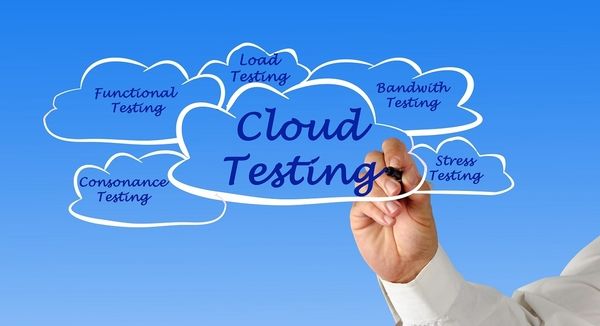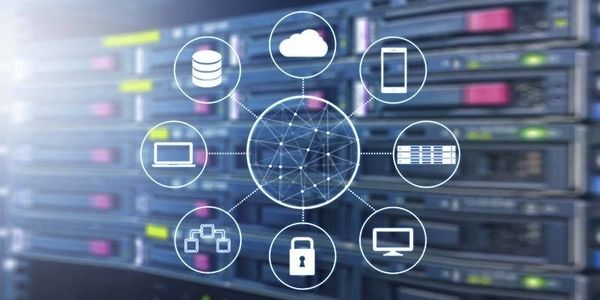
How Cloud Testing Helps to Mitigate the Risk of Cloud Computing
June 2, 2020
The Best Technologies for Social Distancing
June 4, 2020In today’s technology-driven environment, businesses are looking for ways to streamline their processes and maximize resource allocation. Virtualization has proven to be beneficial in delivering cutting-edge solutions needed to address these outcomes.
Virtualization is revolutionizing how businesses operate. Leveraging the power of virtual environments has allowed organizations that recognized the technology’s potential to leap-frog their competition and provide better products and services because their resources aren’t tied down to maintaining physical systems.
It is also proving to be critical in today’s workplace due to the coronavirus pandemic that has forced companies to shutter offices and adapt to having a remote workforce. Let’s take a closer look at what Virtualization is and how it can benefit organizations operating in the new normal.
What Is Virtualization?
The main goal of virtualized systems is to ensure organizations can run multiple operating systems and programs on a single server for better efficiency and scalability. Virtualization has two critical components: the virtual machine and the hypervisor.
The Virtual Machine (VM)
A virtual machine or VM is simply a “virtual” representation of a physical computer. The beauty of virtualization lies in its flexibility – organizations can create multiple virtual computers or machines, each running its operating system and programs – using a single physical computer.
Virtual machines can’t interact with a physical computer instantly. VMs need a software layer called a hypervisor to communicate with the physical hardware it’s on.
What Is a Hypervisor?
The hypervisor is a lightweight software layer that allows multiple operating systems to run beside one another while sharing the same resources of a physical machine. Hypervisors assign each VM a portion of the underlying resources of a physical computer – memory, storage, and computing power – thus preventing the VMs from interfering with each other’s processes.
Types of Virtualization

Credit: Veritis Group Inc
To better understand the benefits of virtualization in business, let’s take a quick look at the different types of virtualization and how it affects networks, systems, and environments.
Desktop Virtualization
Desktop virtualization delivers applications to mobile workers, satellite offices, and employees working offshore. This powerful solution can replace as many as 100 desktops for every virtual desktop server, an efficient way to manage systems across multiple locations.
Application Virtualization
Application virtualization allows users to access desktop applications remotely via a compatible browser or a cloud interface. Old legacy applications that have problems running on modern machines can run without issues as a virtual application. “Virtualizing” apps are easier to roll out, upgrade, and support in the long term.
Server Virtualization
Server virtualization is when more than one Operating System (OS) runs on a physical server as a virtual machine or VM. Every VM instance has access to the server’s computing power. Server clusters that are aggregated into a single resource allow for more efficient use of resources.
Because the entire state of a virtual machine can be saved to file, they provide fault isolation, detection, and recovery at the hardware level. VMs also offer better security, faster workload deployment, increased performance, and lower operating costs.
Network Virtualization
Network virtualization is the complete replication of a physical network but in the form of software. It lets programs run on a virtual network and behave exactly as they would in a physical one while providing logical networking services to connected devices or workstations.
Storage Virtualization

Credit: SearchStorage – TechTarget
Storage virtualization provides businesses with a robust, secure, and isolated storage solution across multiple virtual networks using as little as one storage element.
Instant failover technologies rely on this storage virtualization for better stability and is the key to data redundancy.
What Are the Benefits of Virtualization?
Organizations that use virtualization can reap plenty of benefits right off the gate, such as increased scalability and reduced expenses, to name a few. Here is a more detailed look at these benefits:
Increased Productivity and Efficiency
Fewer servers mean less physical hardware to maintain, and your IT team will be able to devote resources to more pressing issues.
With virtual machines, IT teams won’t have to install, support, and apply updates server-by-server. The environment can be maintained across all VMs by updating a single server, increasing productivity and efficiency.
Reduced IT Expenses
Running non-virtualized environments can be grossly inefficient in today’s modern IT infrastructure. Idle computers can’t be used for anything else if no one is using the applications installed in it. Virtualized environments using a single physical server morph into many virtual machines that can run different operating systems simultaneously.
Incorporating applications to virtualized environments means spending less money on physical hardware and easier troubleshooting.
Less Environmental Impact
Running multiple servers takes much power because they need round-the-clock cooling and enough juice to operate at full capacity. When organizations can use fewer physical servers, they’re consuming less electricity and reducing their carbon footprint, which can only be good for the environment in the long run.
More Resilient Systems = Reduced Downtime
When an incident like a power surge or a fire causes damage to a physical server, it needs to either be fixed or replaced. This scenario could take hours or even days if there aren’t any technicians available or the parts must be ordered elsewhere.
Virtualized environments make it easier to clone the affected machine, provision, and redeploy it. The recovery time on a virtual machine is minutes versus hours or days to provision and set up a physical server.
Segmentation and Testing
Because virtualized environments are segmented into individual VMs, developers can run a virtual machine without impacting the rest of the production environment or development operations. The technology is utilized best for DevOps and ideal for testing because a virtual machine can easily be cloned for running a test on the environment.
For instance, new software patches can be tested on a cloned virtual machine and see how the ecosystem responds, before applying a system-wide update.
When done right, the benefits of virtualization in businesses that rely on technology are massive. It can save companies a lot of time and money by lowering hardware costs and relying less on external support. Servers can be virtualized to run a private cloud computing model so organizations could be less reliant on third-party providers, making them more competitive.
Cloud computing is often mistaken as virtualization, but in reality, it’s merely something that can be done with the technology. The applications for virtualization in business are near limitless, and organizations should embrace the technology now to remain relevant in today’s fast-moving digital world.
Main Photo Credit: Make Tech Easier

